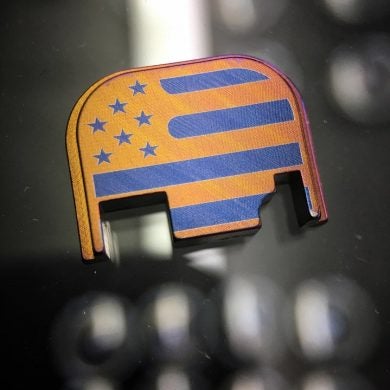Well color me surprised, but I had no idea a laser could affect the refractive electromagnetic radiation perceived by human photoreceptor cells! (whew, I need a crayon). Today in “the future is now”, I spoke with the owner of Classy Raptor Tactical and 82nd Airborne veteran Mr. Curtis Iovito II (Iovito with an i) via the Glock Elite Facebook page.
To get the killer blue color seen above, Curtis told me he first blasts through the Cerakote, then uses “heat from the laser to put an oxide layer on the titanium. Kinda like a layer of rust.” Makes sense to me, even the traditional blueing of steel uses an oxidation process similar to rust. He said “the thickness of the layer refracts the light wavelengths and you see color”.
Here’s a video. The last 10 seconds really show the blue starting to come through:
The laser itself is a Tactical Arms Mark by Control Laser Corporation, and Classy Raptor uses an aerospace grade titanium alloy called 6AL-4V (a mixture of mostly titanium, a little aluminum and vanadium, and tiny amounts of oxygen and iron) which Curtis tells me gives him the best results. Regarding specific colors, he adjusts the frequency of the laser – which took him some time to get right.
To learn more about the science behind the effect, I engaged in a little light reading and quickly found myself neck-deep in this interesting paper, titled “The influence of process parameters on the laser-induced coloring of titanium”. The paper confirms everything Curtis has told me, including the thickness of the oxide layer influencing the color spectrum, that frequency affects color change, and that red is the most difficult color to achieve in both pigment and consistency.
In fact, the paper gives an indication of what colors are possible, which Curtis agreed was accurate in his experience:
 Your Privacy Choices
Your Privacy Choices







